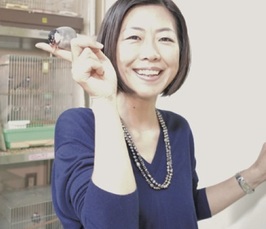Masayo Soma, Hokkaido University, Sapporo: Messages of courtship dance displays in Estrildid finches: evolutionary and ethological aspects
Talk Masayo Soma, Seewiesen
- Datum: 20.12.2018
- Uhrzeit: 13:00 - 14:00
- Vortragende(r): Prof. Dr. Masayo Soma
- Hokkaido University, Sapporo
- Ort: Seewiesen
- Raum: Seminar Room House 4, Tea & Coffee 12:30h
- Gastgeber: Prof. Dr. Manfred Gahr
- Kontakt: gahr@orn.mpg.de

Estrildid finches (family: Estrildidae) are characterised by great intraspecific and intersexual variations in sexual traits, which include courtship song, dance and ornamental colourations of plumage. These features are expected to help us answer some questions about the evolution of sexual signals: (1) why multiple ornaments evolve in socially monogamous species; and (2) why, in certain species, males and females share identical sexual traits. In particular, I have been trying to understand the evolution of courtship dance, relying on phylogenetic comparative approaches along with intraspecific behavioural experiments. The results from a series of phylogenetic comparative studies show that courtship dance and the other sexual traits evolved almost independently. However, it is possible that dance display can function as an “amplifier” of plumage colour patterns, such as dots or stripes that are often possessed by Estrildid finches. These two visual signals (dance and colour patterns) are conspicuous in species with intraspecific brood parasitism, suggesting that reproductive cost/effort should be a factor that explains the evolution of elaborative visual sexual signals. Supporting this idea, both comparative and behavioural studies also show that nest material holding display evolved for parental cooperation of nest building. Males and females of Estrildids often exchange an identical courtship dance, which presumably plays a crucial role in mutual mate choice, pair-formation and pair-bonding.